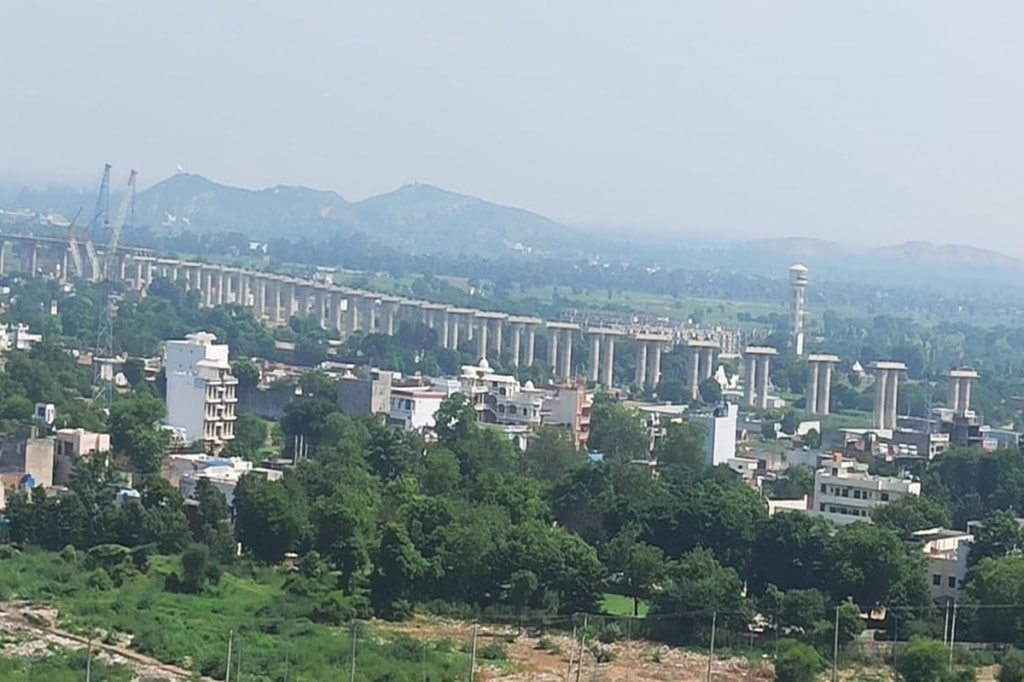Dedicated Freight Corridor Project: An engineering marvel in Haryana! The Dedicated Freight Corridor Corporation of India Limited (DFCCIL) has recently developed a 2.75 km long and (up to) 25 metres high viaduct on Western Dedicated Freight Corridor’s Dadri – Rewari section in Sohna, Haryana. According to DFCCIL, the PSU which is executing the Indian Railways’ ambitious Dedicated Freight Corridor (DFC) project, the viaduct ensures greater airflow, availability of sunlight and less environmental impact on surrounding habitat vis-a-vis an earthen embankment by reducing excavation. The DFCCIL further stated that in a rapidly expanding urban area like Sohna, free traffic flow reducing disturbance to existing roads, ample scope for future road development, is also possible.
Under Indian Railways DFC Project, the DFCCIL is constructing the Western Dedicated Freight Corridor (1506 Route kilometre long) and Eastern Dedicated Freight Corridor (1875 Route kilometre long) including the PPP section between Sonnagar and Dankuni. The Eastern Dedicated Freight Corridor begins from Sahnewal near the city of Ludhiana in Punjab and terminates at Dankuni in the state of West Bengal. The freight corridor will pass through the states of Punjab, Uttar Pradesh, Haryana, Jharkhand as well as Bihar.
The Western Dedicated Freight Corridor will connect Dadri in the state of Uttar Pradesh to Jawaharlal Nehru Port (JNPT) in the financial capital, Mumbai. This freight corridor will traverse through the states of Haryana, Uttar Pradesh, Rajasthan, Gujarat and Maharashtra. Take a look at some of the key objectives of the DFC project:
- Decongestion of the Indian Railway network
- Increasing average speed of freight trains from 25 kmph to 70 kmph
- Running Heavy Haul trains and overall load of 13,000 Tonne
- Facilitating the operation of longer (1.5 kilometre long) and double stack container trains
- Linking existing ports as well as industrial areas for faster goods’ transportation
- Eco-friendly and energy-efficient rail transport system as per global standards
- Increasing rail share from 30 per cent to 45 per cent
- Reducing transportation’s logistic cost

